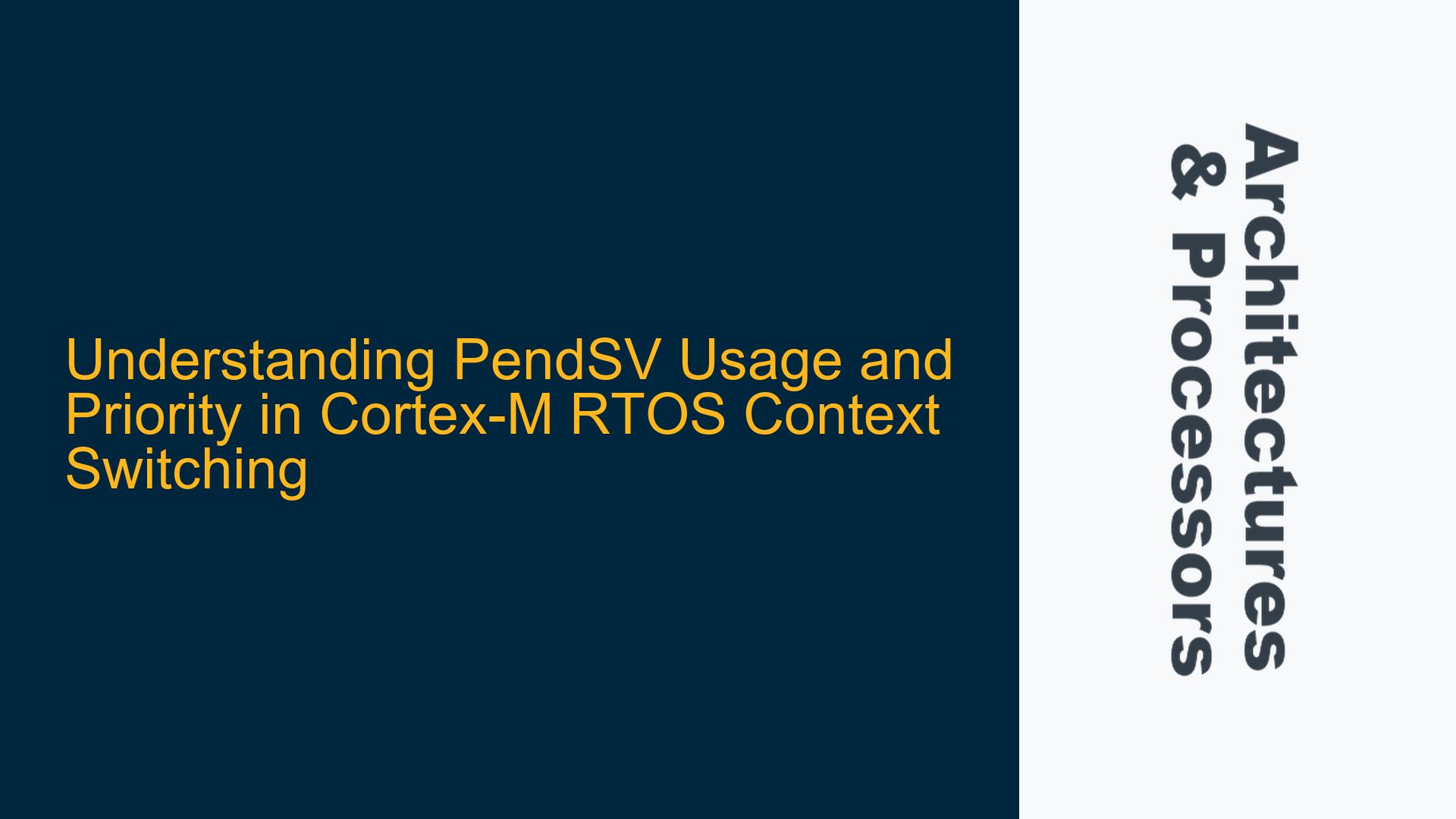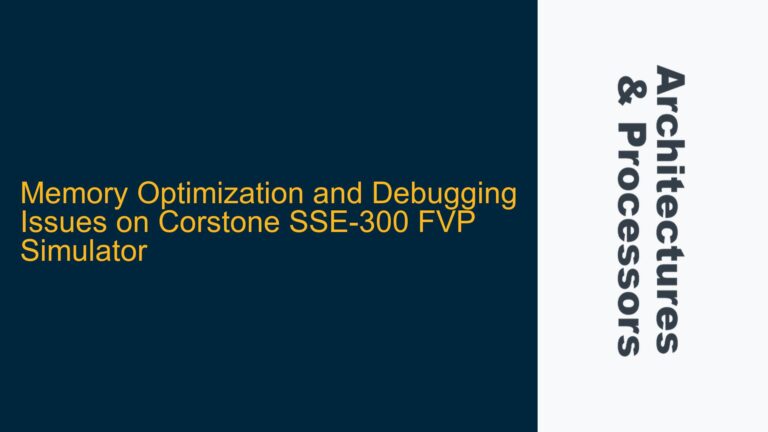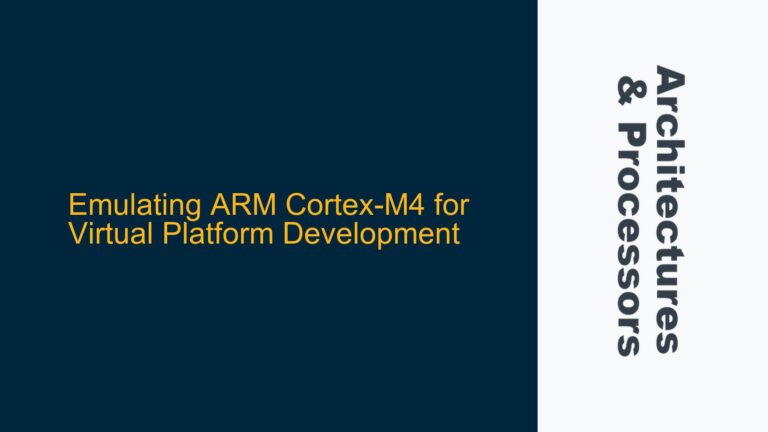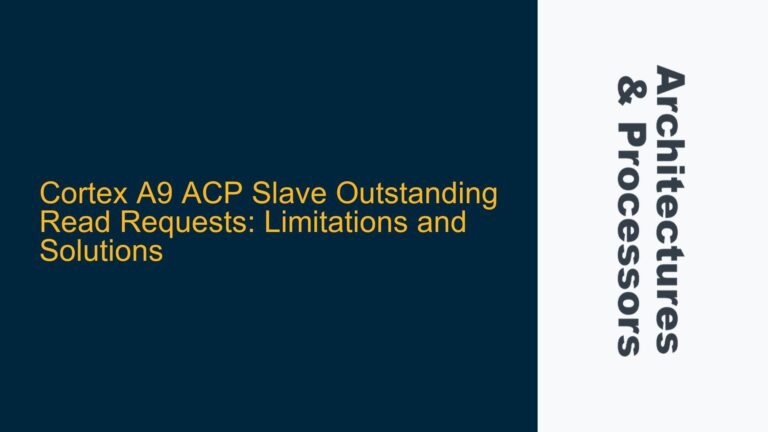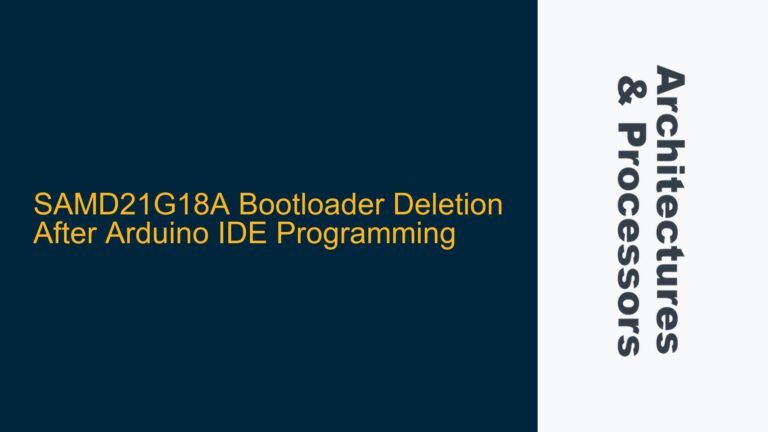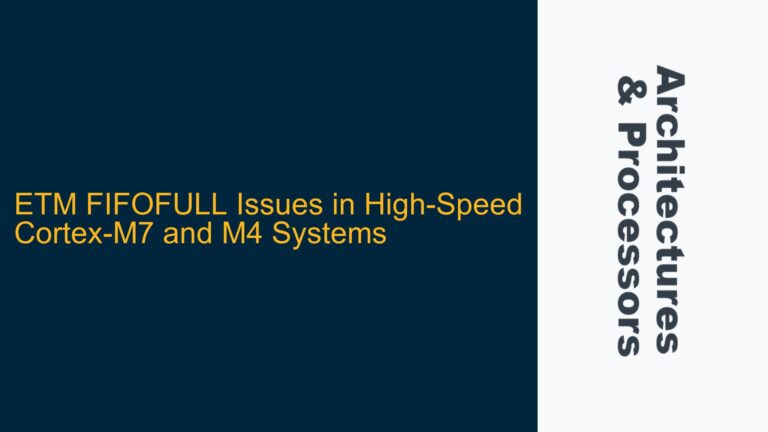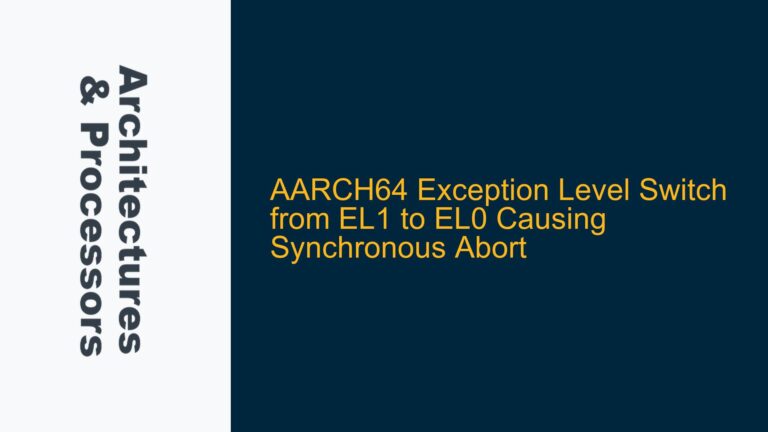PendSV and Context Switching in Cortex-M RTOS: Why Lowest Priority?
The PendSV (Pendable Service Call) exception is a critical component in Real-Time Operating Systems (RTOS) running on ARM Cortex-M processors. It is primarily used for context switching, which is the process of saving the state of a currently running task and restoring the state of the next task to be executed. The use of PendSV for context switching is well-documented, but the rationale behind its lowest priority setting and its necessity in the context of nested interrupts is often misunderstood or overlooked.
Cortex-M Exception Handling and Context Switching Mechanics
In ARM Cortex-M processors, exceptions and interrupts are handled by the Nested Vectored Interrupt Controller (NVIC). The NVIC supports priority levels for interrupts, allowing higher-priority interrupts to preempt lower-priority ones. When an exception or interrupt occurs, the processor automatically saves the current state of the processor (context) onto the stack. This includes the Program Counter (PC), Program Status Register (PSR), and other key registers. The processor then jumps to the corresponding exception handler.
Context switching in an RTOS involves saving the current task’s context (registers, stack pointer, etc.) and restoring the context of the next task to be executed. This process is typically triggered by a timer interrupt, such as the SysTick timer, which periodically interrupts the processor to allow the RTOS scheduler to decide which task should run next.
The PendSV exception is specifically designed to handle context switching in a way that minimizes disruption to the system. When a context switch is needed, the RTOS sets the PendSV exception to pending state. The PendSV handler then performs the actual context switch. The key advantage of using PendSV is that it can be deferred to a later time, allowing higher-priority interrupts to complete before the context switch occurs.
The Role of PendSV Priority in Nested Interrupt Scenarios
One of the most critical aspects of using PendSV for context switching is its priority setting. PendSV is typically assigned the lowest priority among all interrupts. This ensures that PendSV will only execute when no other higher-priority interrupts are active. The reason for this design choice is rooted in the way the Cortex-M processor handles nested interrupts and the potential issues that can arise if context switching occurs in the middle of an interrupt service routine (ISR).
When an interrupt occurs, the processor automatically saves a partial context (PC, PSR, and some general-purpose registers) onto the stack. However, not all registers are saved automatically. Specifically, registers R4-R11 are not saved by the hardware and must be manually saved by the ISR if they are used. If a context switch were to occur in the middle of an ISR, the state of these registers could be lost or corrupted, leading to unpredictable behavior.
By setting PendSV to the lowest priority, the RTOS ensures that context switching only occurs when no other interrupts are active. This guarantees that the context switch will only suspend the current background thread, and not an ongoing ISR. This is crucial for maintaining the integrity of the system, as it prevents the scenario where a context switch could corrupt the state of an interrupted ISR.
Potential Issues with Context Switching in Higher-Priority Interrupts
If PendSV were not set to the lowest priority, there would be a risk of context switching occurring in the middle of an ISR. This could lead to several issues:
-
Register Corruption: As mentioned earlier, registers R4-R11 are not automatically saved by the hardware when an interrupt occurs. If a context switch were to occur in the middle of an ISR, these registers could be overwritten, leading to data corruption and unpredictable behavior.
-
Stack Corruption: The stack is used to save the context of the current task during a context switch. If a context switch were to occur in the middle of an ISR, the stack could become corrupted, leading to system crashes or other undefined behavior.
-
Inconsistent State: Context switching in the middle of an ISR could leave the system in an inconsistent state. For example, if an ISR were in the process of updating a shared resource when a context switch occurred, the resource could be left in an inconsistent state, leading to race conditions or other synchronization issues.
-
Increased Latency: Context switching in the middle of an ISR could increase the latency of higher-priority interrupts. This is because the context switch would need to save the state of the interrupted ISR, which could take additional time. This could be particularly problematic in real-time systems where timing is critical.
Implementing PendSV for Safe and Efficient Context Switching
To ensure safe and efficient
